Soul Transcendent: How DP Autumn Durald Arkapaw Captured Black Music’s Timeless Continuum in “Sinners”
In part one of our interview with Sinners cinematographer Autumn Durald Arkapaw, the groundbreaking DP discussed how she leveled up to frame Coogler’s soulful supernatural epic by learning to use the largest film format available. Coogler’s ambitions for his vampire thriller, starring Michael B. Jordan as twin brothers Smoke and Stack, were massive. The brothers return to Clarksdale, Mississippi, after serving in World War I and then taking their talents to Chicago, where they worked for, and then against, the legendary gangster Al Capone. Their goal is to open a juke joint in the delta and turn their ill-gotten cash and liquor into a thriving business that serves their people cold drinks and real blues. So, Arkapaw learned to master 65 mm IMAX image capture, earning the distinction of becoming the first female cinematographer to shoot on the super-sized cameras. She recalls, “Ryan always says on set, ‘Big Movie! Big Movie!’ in a very inspirational, funny way. He did that on Wakanda Forever, too. Ryan has given me opportunities to grow and excel in my craft, opportunities that aren’t often offered to someone like me.”
Now, in the second part of our interview, Arkapaw zeroes in on the film’s instantly iconic Juke Joint music sequence, harnessing moonlight for the Irish vampires scenes, and connecting with her roots in the Deep South during the making of Sinners.
There have been unanimous raves for the Juke Joint sequence, which starts with Preacher Boy Sammie playing his guitar (a 1932 Dobro Cyclops) and singing the blues and somehow morphs into an ecstatic experience of Black music past, present, and future. It includes West African Griot playing a proto banjo, a ’70s guitarist with Jimi Hendrix vibes [played by blues guitarist Eric Gales], a 1980s DJ creating a hip hop beat, West Coast R&B, an African drummer and ancestral dancer, and a modern hip hop dancer, all surrounding Sammie and his dobro. What was involved in bringing together all these different crafts to construct this Sinners set piece?
Bringing together all the different crafts – that’s honestly how the sequence came to life. It was beautifully written on the page, and from the start, Ryan shared with us what the scene meant to him. From there, it became about execution: how to move the camera, how the transitions would work, how to carry the emotion through each beat. There were a lot of logistical challenges to solve. The sequence shifts from an interior stage setup to a full VFX takeover in the roof, and then to an exterior location with the lumber mill burning around them. So yeah, every department was operating at a very high level to pull it off.

What were the steps involved?
We started by drawing out the camera trajectory on a floor plan of the mill, and then moved on to generating a pre-vis with this information. That process really helps everyone visualize the scene in the space and provides meaningful notes. In the pre-vis, we plug in the lens sizes to get a sense of what the camera sees and how it moves through the room. It also serves as a valuable guide for Ludwig Göransson and his team, as well as for the choreographer, helping with musical timing and dance movements. It allows Ryan to see exactly where the shifts in musical style and cultural representation occur, so he can evaluate the transitions and give specific notes.
It’s hypnotic.
Because it’s an emotional, surrealistic shot, we wanted it to have a dreamy, flowing quality, and that’s where Steadicam becomes essential. We shot it on 15-perf IMAX, entirely on Steadicam, with three shots stitched together for the juke interior section. It took a lot of coordination and effort, and I’m really proud of that scene because it’s so original and so distinctly Ryan. Only he could have envisioned it. He has a real gift for writing scenes where we move the camera in ways that are both visually compelling and narratively meaningful, finding powerful ways to say a lot in a short amount of time.
How long did it take to shoot the Juke music sequence?
We shot the interior sequences in one day.
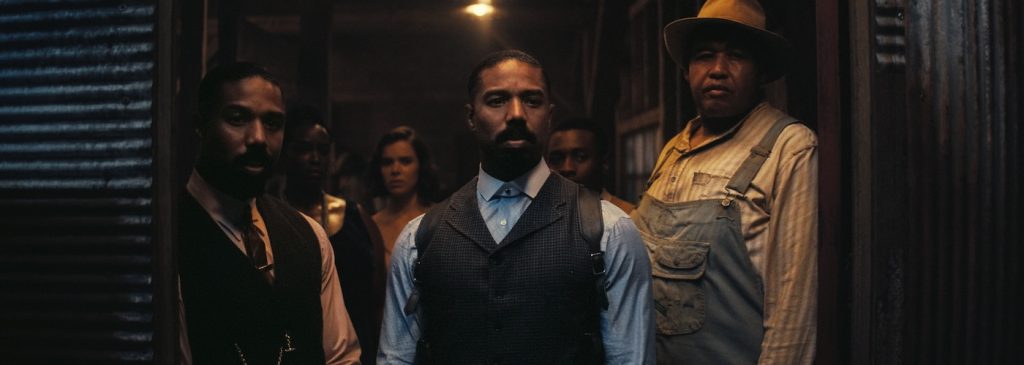
Wow.
For that music interior day, we brought everyone together beforehand for a rehearsal: the choreographer, the actors, the dancers, and the music team. That way, we had a solid plan going in. Our night exterior crane pullback was shot on a different night, and the burning roof plate was captured on our final day of photography. So if you break it down that way, the whole sequence came together over three separate days.
Sinners delivers this one-two punch when you take us from the juke joint in the woods to the Irish folk music vampires Remmick (Jack O’Connell) lurking outside. Seeing a banjo strapped across Remmick’s back somehow felt creepy.
I love that because the camera, mood, and music are so beautifully married, it’s deeply affecting. The musical cue kicks in after the camera pulls back from Sammie and ends up on the backs of the three vampires, then cuts to their faces and pushes in on Jack’s eyes. And then it cuts to reality, where they walk up to the juke, where we start the “Pick Poor Robin Clean” scene.
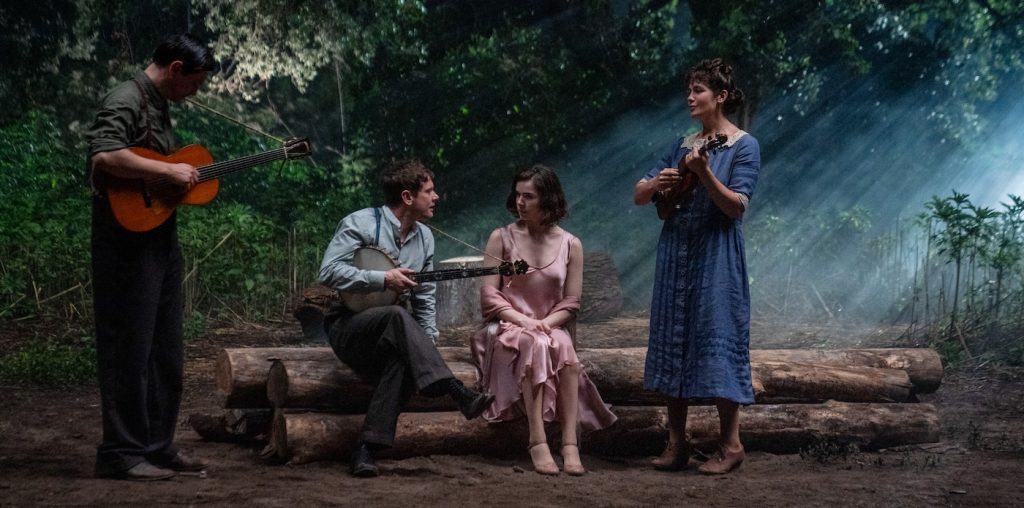
In contrast to the warmer light that comes before, the vampires are bathed in this eerie blue moonlight. How did you calculate that shift in mood?
It’s always important to me that shots are grounded in reality, so being in the middle of nowhere, the biggest source of light is the moon. It was a very complex setup for my G&E team. We had a big softbox on a construction crane, with many condors across the river to light the background and add depth. We also used a smaller softbox that we could move around to light the scene directly. During Jack’s Irish dance, there are a lot of actors and movements, so you need to have a broad source. Since they’re all out there in the middle of nowhere, I wanted the main source to be that soft top light. Sometimes, when the actors drop their heads, you lose their eyes in shadow, but I think that adds something to the storytelling. It lets the light guide the emotion in a very dramatic way.
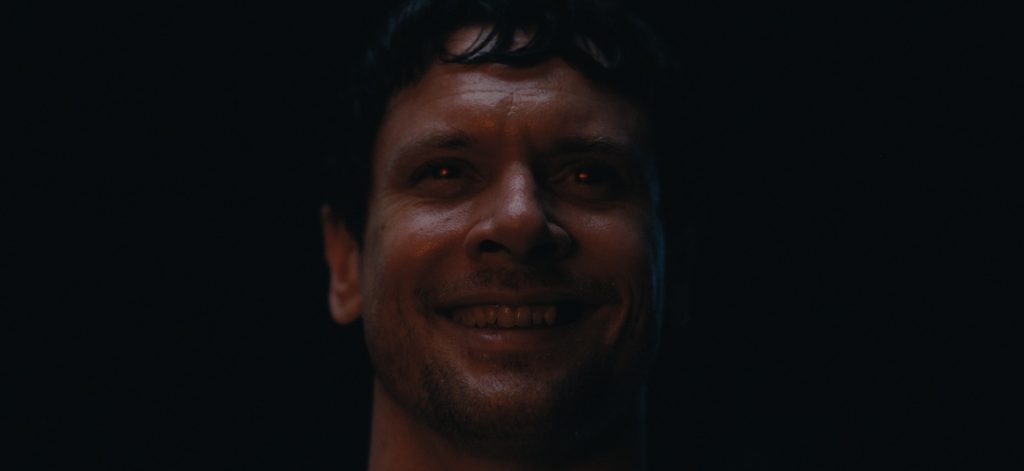
You’re aiming for a natural effect?
I’ve worked with my gaffer for over ten years, and we share the same taste and aesthetics. We both aim to craft lighting that feels authentic and never distracts from the story. It can be beautiful and even stylized, but it still needs to feel natural. So for this scene, I wanted the strongest source to be moonlight.
It’s interesting how the lighting shifts tones to reflect the narrative’s twists and turns.
I always appreciate lighting that becomes its own character. Ryan is a bold filmmaker, so he’s not afraid to leave things unseen. That approach is always inspiring to me because I love working with darkness to create drama. Sinners was a perfect opportunity for that, because it blends genres—it’s a vampire story, a gangster story, and more, so we really got to play with darkness and shadow in a meaningful way.
Making Sinners in the state of Louisiana for five months, including 66 days of shooting, were you mindful of the impact a project of this scale has on the local filmmaking community?
Yes, 100 percent. You really do become a part of the community, working with people and creating a kind of temporary family for the time that you’re there. And also just the fact that my family’s from there.
Really?
My great-grandmother was born in Meridian, Mississippi, and my father was born in New Orleans. My family still lives there. My auntie Janis came to set, and Ryan put her in the movie. She appears in the grocery store scene.
No kidding. Where’s your accent?
I grew up in Northern California, in the Bay Area, like Ryan. But once I started working on this movie, I began delving into my family’s ancestry with my aunt. When you collaborate with Ryan, you really dive deep into a lot of different things, and it became important for me to understand my own history and how it connected to our story. As we worked on the film, I kept thinking about my ancestors and how much I wanted to make them proud.
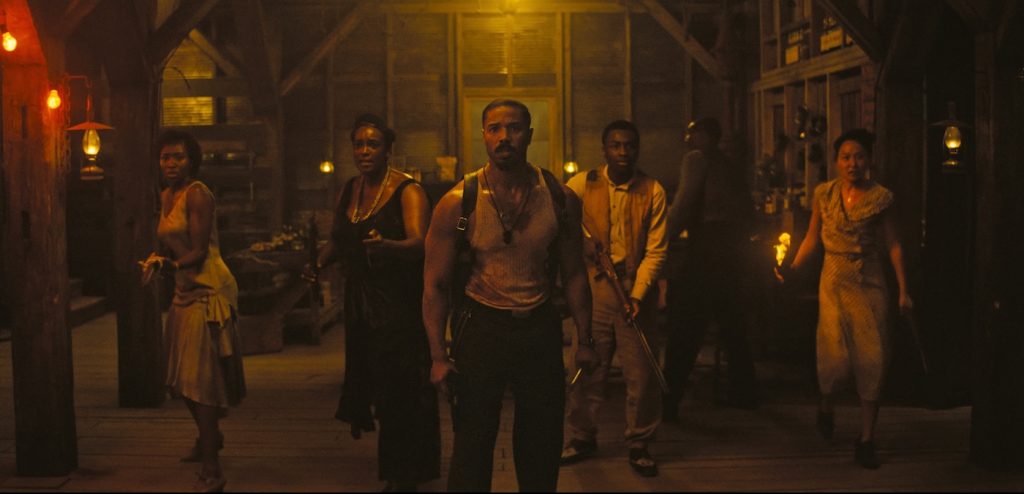
They probably wouldn’t have predicted that you would become the first woman DP in history to shoot a feature film on large format cameras.
On Wakanda Forever, Ryan hired me to shoot this epic tale, which carried even more significance following the tragic loss of Chadwick [Boseman]. Ryan emphasized the importance of capturing everything underwater, authentically. Our team set out to build and explore a new world in that film. This time, we shot in large format, and I remember receiving a call from Kodak, informing me that I was the first woman to shoot a film in both 65mm and IMAX formats. Ryan has consistently given me opportunities that have not only shaped my career but also inspired others, especially those who look like me or have yet to receive such opportunities. It’s a responsibility I carry with me every day on set, and I draw tremendous inspiration from it

Over the several months you spent working on Sinners in Louisiana, do you have a favorite memory that sticks with you?
One moment stands out to me with absolute clarity: the farmhouse sequence we shot with the Choctaw—the Native American vampire hunters. We took a black and white photo on the porch with them, and the instant I saw it, it felt like I was looking at a version of myself from the past. It still makes me emotional. I was named after Cheyenne Autumn, a John Ford western, and that day, we captured some incredible IMAX shots on cranes – images of the Choctaw on horseback that felt straight out of a classic western. Ryan gave me the opportunity to shoot that scene in the spirit of the genre I was named after. When my parents gave me that name, I’m sure they never imagined I’d one day become a cinematographer. That moment is one I will carry with me forever.
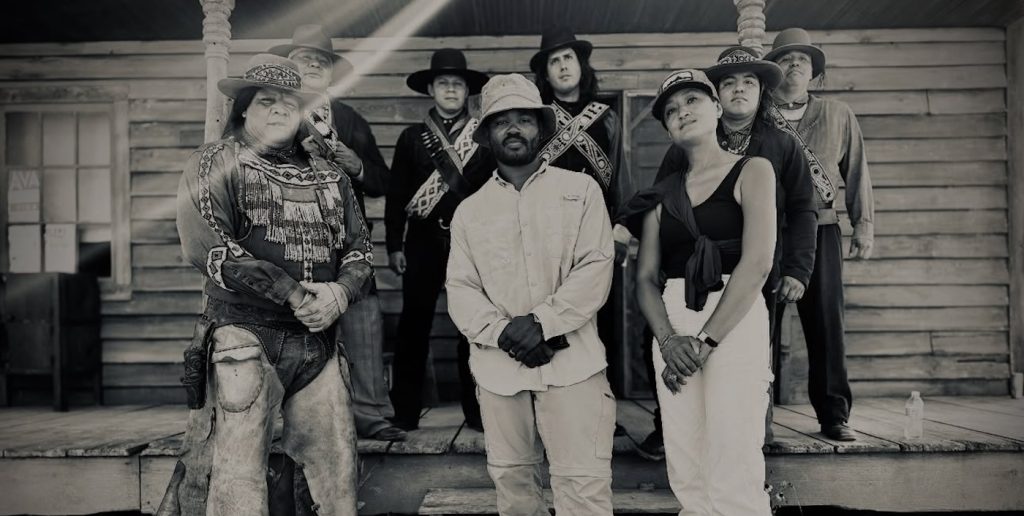
Audience reaction to Sinners has been through the roof. That must be gratifying.
When you’re on the ground making a film with Ryan, the goal is always to create lasting, emotional images, especially because people who look like us rarely get these kinds of opportunities, at this level, in this format. Our actors were just as inspired and committed; they showed up every day and gave it their all. So it’s incredibly meaningful to see audiences responding to Sinners with such excitement. I was there every day, with my eye on the eyepiece, and I truly felt we were making something special, something rare and important.
Sinners is in theaters now.
Featured image: Cinematographer Autumn Arkapaw. in Warner Bros. Pictures’ “SINNERS,” a Warner Bros. Pictures release. Photo Credit: Eli Adé. Copyright: © 2025 Warner Bros. Entertainment Inc. All Rights Reserved.



